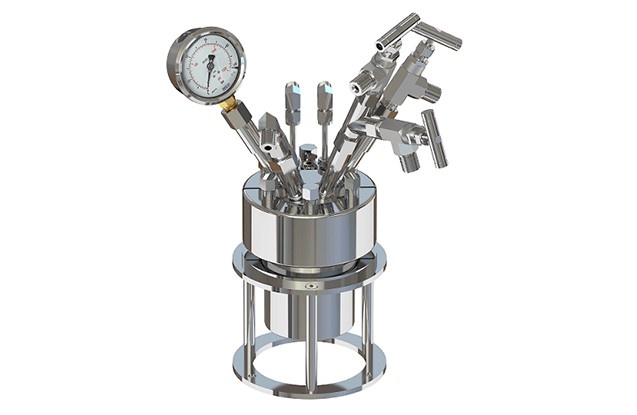In the quest for cleaner and more sustainable energy sources, hydrogen has emerged as a promising candidate. Hydrogen fuel cells, in particular, have gained attention for their potential to power everything from vehicles to industrial processes with zero harmful emissions. However, one critical component that often goes unnoticed in the hydrogen production process is the high-pressure reactor vessel. In this article, we'll explore the pivotal role these vessels play in hydrogen generation and fuel cell technology.
Hydrogen Generation Methods
Before diving into the role of high pressure reactor vessels, let's briefly touch upon various methods of hydrogen generation. Hydrogen can be produced from a variety of sources, including natural gas, biomass, electrolysis of water, and more. Each method has its advantages and disadvantages, but the common goal is to produce high-purity hydrogen efficiently.
The Importance of High Pressure
Many hydrogen generation methods, such as steam methane reforming (SMR) or water-gas shift reactions, require high pressure to drive the chemical reactions effectively. High-pressure conditions enhance reaction kinetics, leading to faster hydrogen production rates and increased efficiency. This is where high-pressure reactor vessels come into play.
High-Pressure Reactor Vessels: The Workhorses of Hydrogen Generation
High-pressure reactor vessels are specially designed containers that withstand extreme pressures and temperatures while housing chemical reactions. These vessels are the workhorses of hydrogen generation, playing a pivotal role in several key processes:
- Steam Methane Reforming (SMR)
SMR is one of the most common methods for hydrogen production. In this process, natural gas is reacted with steam at high temperatures and pressures in the presence of a catalyst. The high-pressure reactor vessel ensures that the reaction takes place efficiently and that the resulting hydrogen is of high purity.
- Water-Gas Shift (WGS) Reaction
The WGS reaction is used to further purify the hydrogen obtained from SMR or other methods. It involves the conversion of carbon monoxide (CO) to carbon dioxide (CO2) and additional hydrogen. This reaction also occurs at high temperatures and pressures, making the high-pressure reactor vessel indispensable.
- Hydrogenation Reactions
In various industrial applications, hydrogenation reactions are employed to convert unsaturated compounds into saturated ones. These reactions are used in the production of chemicals, petrochemicals, and food products. High-pressure reactor vessels provide the necessary conditions for these transformations to occur efficiently and rapidly.
Fuel Cells: The Endgame
While high-pressure reactor vessels are essential for hydrogen production, their importance extends to the heart of the hydrogen economy: fuel cells. Fuel cells are electrochemical devices that convert hydrogen and oxygen into electricity and water, with high efficiency and zero emissions. The role of high-pressure reactor vessels in fuel cells can be summarized as follows:
- Hydrogen Storage
Fuel cells require a constant and controlled supply of hydrogen to function optimally. High-pressure reactor vessels are used to store and transport hydrogen at high pressures, ensuring a reliable and consistent source for fuel cells.
- Hydrogen Fueling Stations
For fuel cell vehicles to become a viable option, a network of hydrogen fueling stations is essential. These stations rely on high-pressure storage and refueling systems, where high-pressure reactor vessels play a crucial role in storing and dispensing hydrogen to vehicles quickly and safely.
- Stationary Fuel Cells
Stationary fuel cells are used for power generation in homes, businesses, and industries. They require a steady supply of high-purity hydrogen, which can be provided through high-pressure reactor vessels, ensuring uninterrupted power generation.
Conclusion
In the pursuit of a sustainable energy future, hydrogen generation and fuel cells have emerged as critical technologies. High pressure vessel may not always be in the limelight, but they are the unsung heroes that enable efficient hydrogen production and storage, paving the way for the widespread adoption of hydrogen fuel cells. As we continue to explore cleaner energy alternatives, it's essential to recognize and appreciate the vital role that high-pressure reactor vessels play in powering our future with hydrogen.


No comments yet